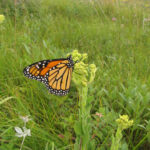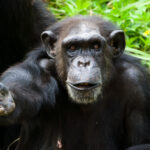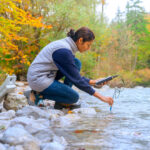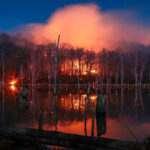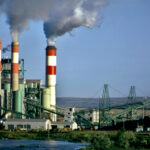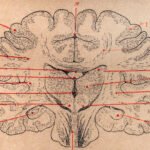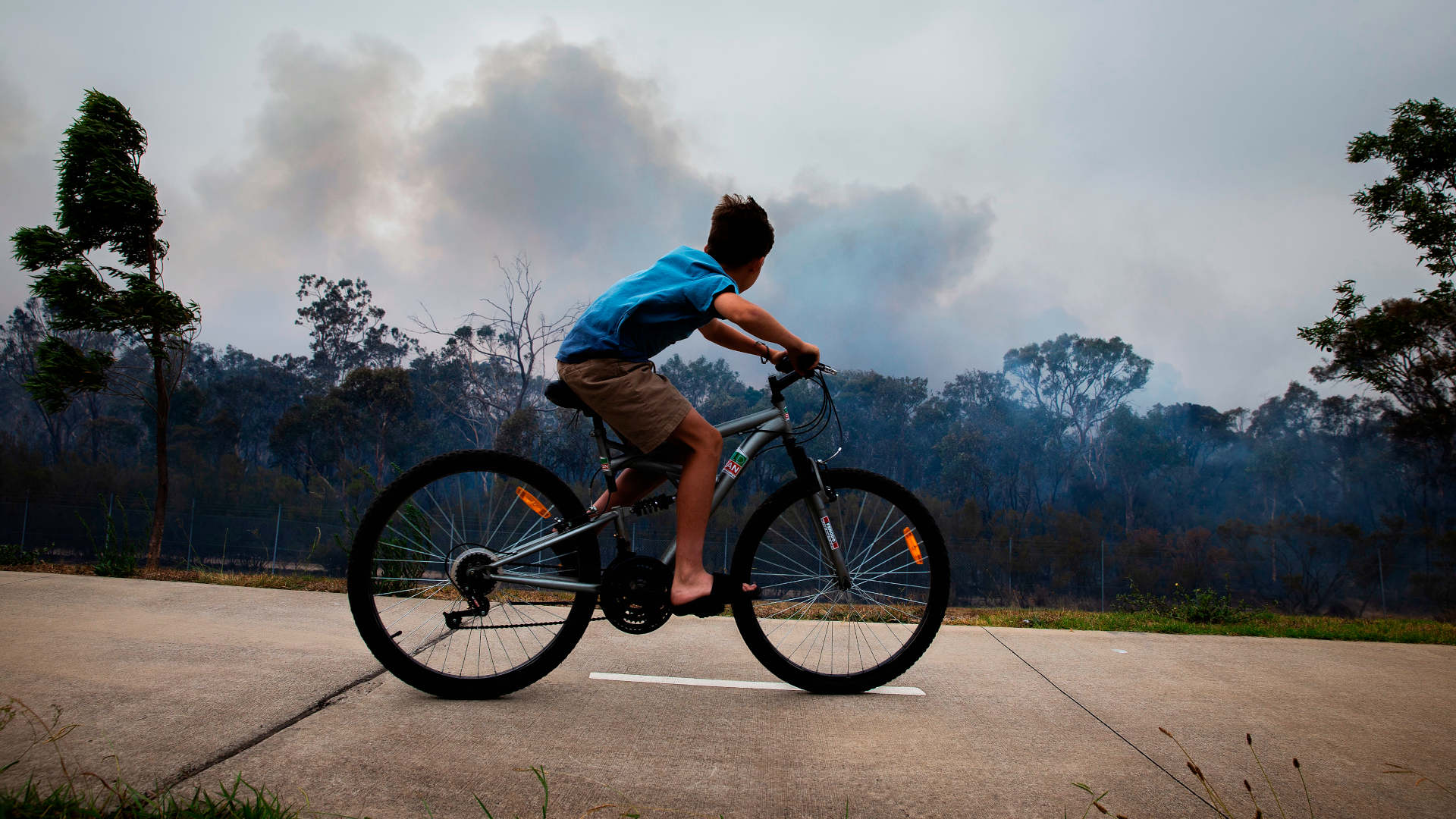In 2013, a baby named Anna and her mother visited the pediatrician because Anna was having trouble breathing: The 10-month-old’s lungs emitted a “coarse sandpapery sound” when her doctor pressed a stethoscope to her chest. It wasn’t difficult to figure out why. Outside the doctor’s office, the city was “dusted and lifeless as the moon,” the air “churning with smoke and blowing debris.”
This was the summer of Yosemite National Park’s Rim Fire, a blaze that started in California and wafted smoke to Anna’s home in Reno, Nevada, poisoning Anna’s lungs with particle pollution as well as formaldehyde and hydrogen cyanide.
The adults of Reno were breathing the poisoned air too. But Anna and her peers were more vulnerable because, physiologically, children are quite different than adults. Babies only possess a fraction of the alveoli, or tiny air sacs in the lungs, that adults do. Childhood should be a time of rapid proliferation of alveoli — but smoke can stunt development, leading to small, stiff lungs and a lifetime of asthma, pneumonia, and other respiratory issues. Even more troubling, new studies have shown that inhaling pollution particles as a child can cause cognitive impairment.
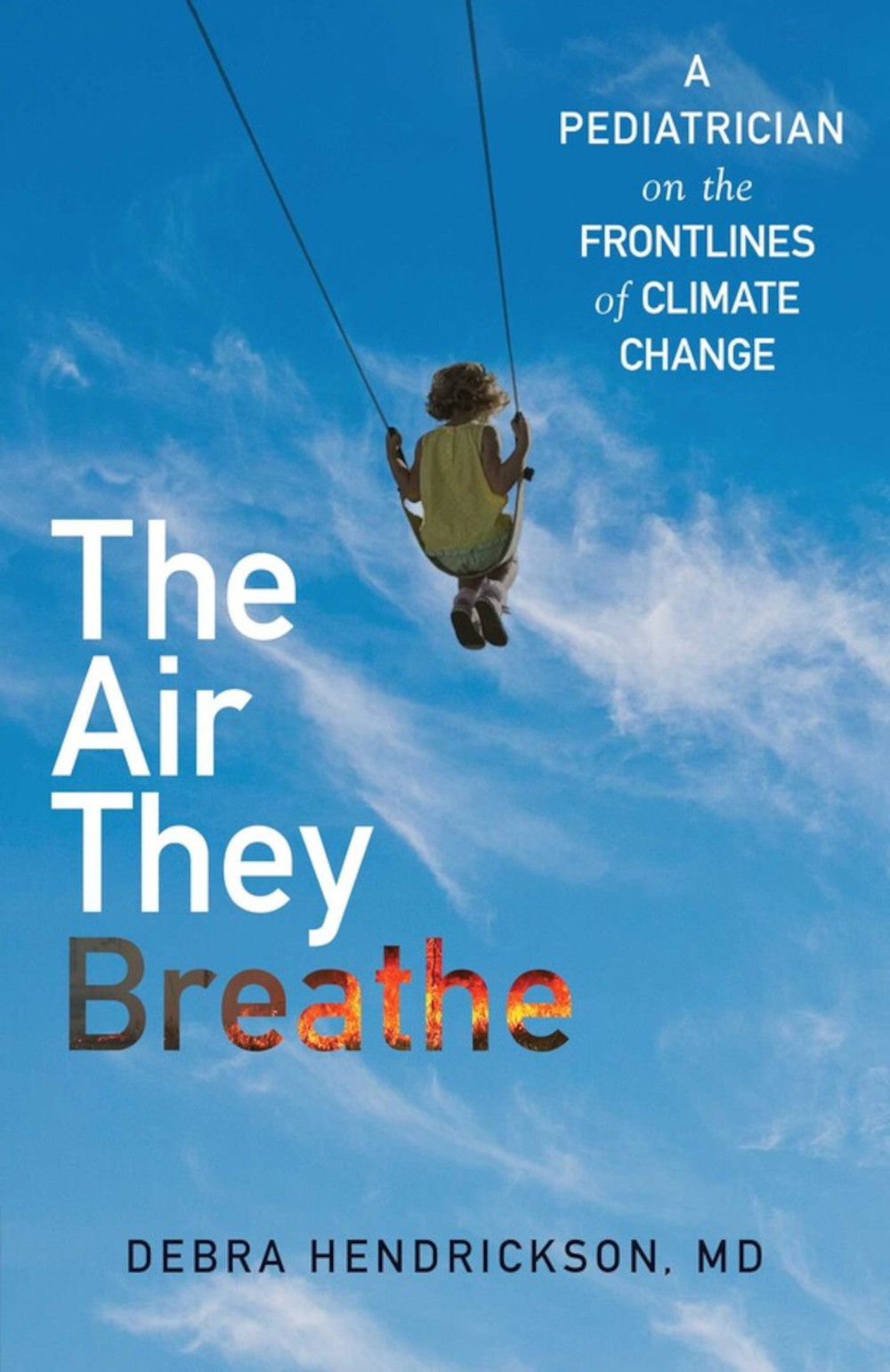
BOOK REVIEW — “The Air They Breathe: A Pediatrician on the Frontlines of Climate Change,” by Debra Hendrickson (Simon & Schuster, 256 pages).
Polluted air’s disproportionate impact on children is just one piece of the thesis of “The Air They Breathe: A Pediatrician on the Frontlines of Climate Change.” In this slim but stirring book, Debra Hendrickson, a pediatrician in Reno — the fastest-warming city in the U.S., according to Climate Central — argues that the so-called unnatural disasters wrought by climate change are a children’s issue, and not just because children are the innocents that will inherit the Earth.
The climate crisis is particularly trenchant for the young because of the malleability of children’s bodies and minds. Pediatricians often say that “children are not just small adults,” according to Hendrickson, and over the course of 175 pages, she proves it, taking her reader on a tour through wildfires and pollution, extreme heat, hurricanes and floods, and climate-fueled illness to show how the horrors of climate change are dangerous specifically for the youngest — and what we can do about it.
Readers might wonder why a pediatrician decided to write about climate change, since, as Hendrickson acknowledges, she and her colleagues are typically mired in the day-to-day vaccinations and viruses of childhood rather than focusing on sweeping environmental issues. But Hendrickson, who started her career as an environmental planner, writes that she could no longer stay silent about the trends that she and her colleagues have noticed in their exam rooms.
In her view, “green energy and sustainable living are as important to my patients’ welfare as car seats, medications, laboratory tests and vaccines” because of the specific danger to children’s bodies on our rapidly warming planet.
Hendrickson, who started her career as an environmental planner, writes that she could no longer stay silent about the trends that she and her colleagues have noticed in their exam rooms.
Take the heat waves that now scorch the U.S. every summer. All humans possess a sophisticated system designed to keep us cool: Our brain, nerves, vessels, skin, and sweat glands work together to expel the heat created by chemical reactions in our bodies’ cells. When our cooling systems fail, our bodies can’t release the heat from those internal chemical reactions, which spikes our temperatures.
This is the case for all humans. But children have a higher surface area relative to weight than adults and proportionately produce more metabolic heat. With their weaker hearts and smaller sweat glands, they simply can’t combat over-heating the same way adults can — making those heat waves more dangerous and deadly.
Children are also more susceptible to vector-borne illnesses, which are increasing in scope and intensity thanks to humanity’s disruption to the ecosystem. Children are more likely to fall prey to Lyme disease and to develop severe illness from dengue, a tropical virus that’s starting to make inroads in the continental U.S. And most Americans will remember Zika, the mosquito-borne disease that in the 2010s swept the Caribbean, Mexico, and South America and made incursions into the U.S., and that thrives in the hot, dry climate of a warming world. For infected pregnant mothers, Zika infamously can cause fetal microcephaly, such as in the case of Darah, who in 2016 became the first baby born in the continental U.S. with Zika-caused birth defects, after her mother contracted the disease in Honduras.
In researching her book, Hendrickson visited families like Darah’s and like Cody Flom’s, a 12-year-old boy who, in 2016, died on a Phoenix hiking trail in 112-degree Fahrenheit heat. Visiting subjects with firsthand experience of tragedies and disasters allowed Hendrickson to observe another neglected aspect of the climate crisis’ impact on children: the emotional toll.
“Green energy and sustainable living are as important to my patients’ welfare as car seats, medications, laboratory tests and vaccines.”
Young brains are far more neuroplastic than adults’, meaning that traumatic events can easily disrupt development. Children who survive extreme stress sometimes grow up to be adults who “perceive a threat when none exists” and who lack strong brain structures regulating logic and planning.
Early trauma can also reprogram a child’s stress response system, which leads to higher levels of adrenaline and cortisol that can persist into adulthood. For example, during a trip to Houston, Hendrickson met Sophia, a teenager whose family escaped climate catastrophe in Guatemala only to nearly drown in Hurricane Harvey in 2017. Sophia exhibited classic signs of PTSD: She was triggered by any images that reminded her of the hurricane and was haunted by memories of her parents trying to keep the family’s shoes dry by laying them out on the kitchen table just before the storm.
Children like Sophia, says Hendrickson, are often permanently physiologically altered by trauma, especially when they experience repeated catastrophes. “Natural disasters are global news, but their impact can be profoundly intimate: they may shape who some children are,” writes Hendrickson.
Hendrickson’s writing is powerful and persuasive when she relies on these stories and images, which bring context to an abstract, all-encompassing catastrophe. If there is a weakness here, it’s the passages where she explicates details for readers in a way that can feel heavy-handed and sentimental. We don’t need to be reminded, for example, that children “trust us to keep them safe, and we are failing them” or that “climate change has a face, and it is a child’s.”
Images like Anna’s sandpaper-sounding lungs, Sophia’s shoes on the kitchen table, Cody collapsed beneath a scraggly mesquite tree, and Darah snoozing in her mother’s arms have already demonstrated that, and hammering readers with further melodramatic explications might alienate readers who may feel jaded and fatalistic about the horrors of the climate crisis.
Far more potent is Hendrickson’s acute awareness of the tension inherent in chronicling our current crisis in an era when, in general, we’ve made enormous strides in pediatric care. “This may seem an odd point in history for a pediatrician to be ringing alarms,” Hendrickson concedes, pointing out that by most measures, America’s children are the healthiest they’ve ever been. Infant mortality has fallen from nearly 1 in 5 in the mid-1800s to less than 1 in 100 today. Vaccines, antibiotics, and other public health interventions have made childhood a far less fraught life stage.
“Natural disasters are global news, but their impact can be profoundly intimate: they may shape who some children are.”
But therein lies a paradox, one that Hendrickson returns to throughout her book: The Industrial-age innovations that slashed childhood mortality have also fueled our current childhood public health crisis. “Today’s doctors can save a baby with a malformed heart,” Hendrickson says, “but driving to the hospital speeds up, ever so minutely, the end of his world.”
Even so, Hendrickson is not fatalistic about our children’s future. Her book is replete with examples of how we can fight back: Throughout, she highlights solutions ranging from playgrounds built around shade sails and trees instead of asphalt to initiatives like a resiliency and recovery program for children traumatized by Hurricane Harvey.
And she ends with a stirring call to action: We don’t need a Salk or a Fleming to save us. We already have the solutions to stop climate change. We can transition to a world reliant on electric heat pumps, where cities have car-free zones, where people eat more plants, where smog is a relic of the past.
The catch is, we’d better start working on it now. “Children’s bodies and minds are inseparable from the atmosphere. Its health and theirs are linked. The toxins we dump upward, and the steps we take to end that practice, will hugely impact their lives,” Hendrickson warns near the end of the book. But, as she reminds readers early on, “We have invented the tools we need to solve humanity’s most pressing problem, if we act before it is too late.”
Emily Cataneo is a writer and journalist from New England whose work has appeared in Slate, NPR, the Baffler, and Atlas Obscura, among other publications.



